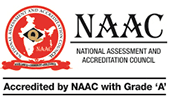People Analytics, also known as HR Analytics, is rapidly transforming the role of human resources (HR) within organizations. Traditionally, HR decisions were made based on intuition and subjective assessments, but the rise of data-driven insights is changing the landscape. People Analytics refers to the use of data, statistical analysis, and algorithms to better understand and manage human capital.
By leveraging data, HR professionals can make more informed decisions in key areas like talent acquisition, employee engagement, performance management, and workforce planning. In recruitment, for example, predictive models can analyze historical hiring data to forecast which candidates are likely to succeed in specific roles, improving the hiring process and reducing turnover.
For employee engagement, People Analytics helps HR teams identify patterns in job satisfaction and retention, allowing them to proactively address issues that might cause high turnover. It also helps in performance management, providing real-time feedback and more accurate assessments of individual and team contributions.
Beyond operational benefits, People Analytics enables HR to play a more strategic role in business, aligning talent strategies with company goals. For instance, data can reveal skill gaps, helping HR design targeted training programs to develop the workforce for future needs.
However, to unlock the full potential of People Analytics, HR professionals need to invest in the right tools and develop analytical skills within their teams. This includes using platforms like Workday, SAP, or Oracle to integrate data from various sources and generate actionable insights.
As AI and machine learning evolve, HR will become even more data-centric, enabling personalized career development and more effective workforce management. Ultimately, People Analytics not only enhances the efficiency of HR processes but also drives organizational success by making talent decisions smarter, faster, and more effectively.
How Can HR Professionals Leverage People Analytics?
While People Analytics is a powerful tool, its effectiveness depends on the way it is applied within the organization. Here are a few steps HR professionals can take to leverage analytics successfully:
People Analytics requires significant investment in technology, time, and training. Before diving into analytics projects, HR leaders must secure buy-in from top management by clearly communicating the business value of data-driven HR strategies. When leadership understands the potential for data to drive business outcomes, it’s easier to justify the necessary resources.
HR analytics tools vary widely, from simple spreadsheets to advanced AI-powered platforms. Depending on the organization’s needs, HR may need to invest in software that integrates seamlessly with existing HR systems (like payroll or performance management tools) to pull relevant data. Key platforms in the People Analytics space include Workday, SAP SuccessFactors, and ADP Workforce Now, but there are many others to explore.
It’s not enough to just have data; HR professionals must be equipped with the skills to interpret and use that data. This means investing in training HR staff on analytical techniques, data interpretation, and data storytelling. HR teams should also collaborate with data scientists or analytics professionals to ensure that complex data models are understood and actionable.
With the power of analytics comes responsibility. People Analytics deals with sensitive employee data, so it’s critical to ensure that all analytics practices adhere to privacy laws, ethical standards, and organizational values. HR professionals must always prioritize transparency and fairness, particularly when using predictive models for decisions like hiring or promotion.
For many HR departments, the prospect of implementing People Analytics can be overwhelming. A good starting point is to focus on one or two key areas where data-driven decisions can have an immediate impact—like improving the hiring process or enhancing employee engagement. Once you have achieved success in those areas, you can scale analytics efforts across other HR functions.












